Away / Through the lens
Québec’s Northernmost Gardens
In the Reford Gardens, you wander amongst the northern and the exotic, architecture and contemporary art, botany and gastronomy, the know-how of gardeners and local and international landscape designers. Pinch yourself if you must; this idyll is real.
Text & Photos — Catherine Bernier
Nestled between the hills of the Gaspé peninsula and the unique landscape of the Lower St. Lawrence lies the work of pioneering 1920s horticulturalist Elsie Reford. The Reford Gardens occupy a unique ecosystem where the Mitis River flows into the St. Lawrence. The fragrant conifers form a benevolent barrier against the windy, salty summer air, and abundant snow shelters flora and fauna in winter.
I remember visiting the gardens when I was little. Every summer I travelled there from Sainte-Flavie, the neighbouring village where I grew up. They were so immense, I felt like I had landed in another universe. The gardens shaped my imagination and my aesthetics. These days, more than ever, they feed my senses and help me forge new links to the region I come from.
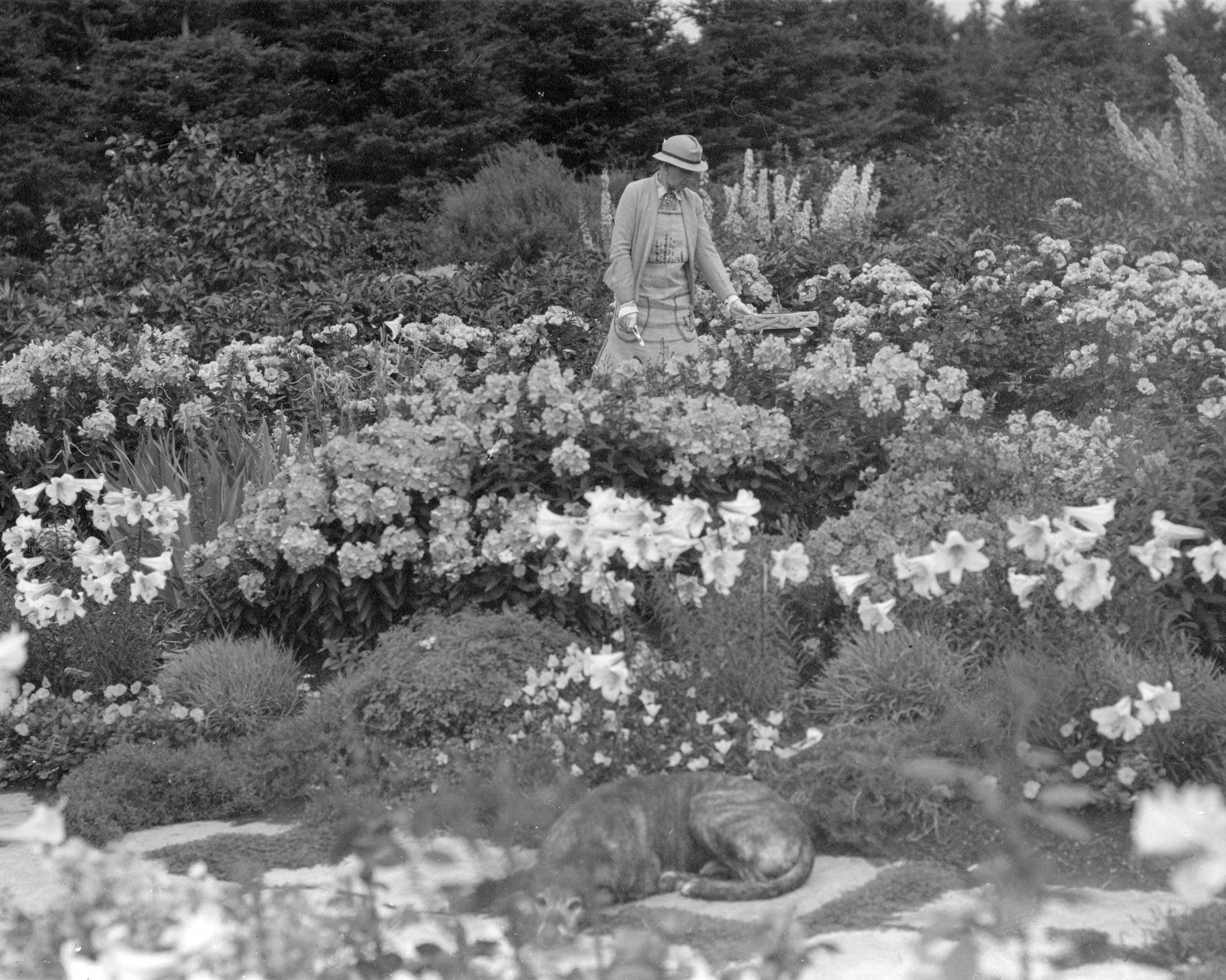
Elsie Reford among the lilies and delphiniums ofthe Long Walk, about 1940. Reford, Robert Wilson. Collection Les Amis des Jardins de Métis
Elsie Reford: a horticulturalist and so much more
__________
In her correspondence, Elsie once lamented, “If only I could be a man,” archivist Marjolaine Sylvestre tells me as we tour the House Gardens. But Elsie was not to be deterred from living a life of adventure. She fished for salmon on the Mitis River, went on winter caribou hunting expeditions, rode horses, gardened, traveled overseas, managed an estate, and was involved in politics, particularly women’s health and foreign affairs.

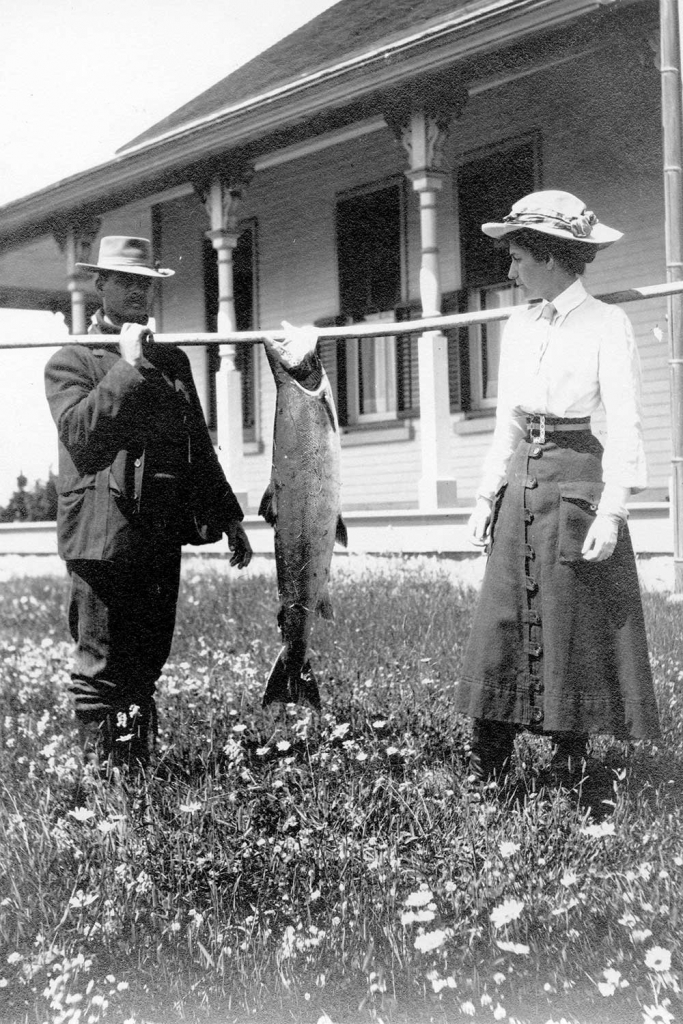
“My great-grandmother was at war with the superficiality of the world. She tried to change it, to make people more progressive and more modern” wrote Alexander Reford, the Gardens’ Director and great-grandson of Elsie Reford, for the permanent exhibit, Elsie through the eyes of…
A fly-fishing enthusiast, Elsie Reford grew up in Montréal in a bourgeois Anglophone family. She spent all of her summers at the Estevan Lodge, which she inherited in 1918 when she was 46 years old. The lodge had served as a fishing camp and previously belonged to her uncle, George Stephen, the financier behind the construction of the Canadian Pacific Railway.
Elsie began gardening at the age of 54, when her doctor recommended that she find an activity less physically demanding than fishing. But Elsie never did anything in half measures: she decided to transform her 20 acres of land, including a portion of spruce forest, into a garden that would become one of the most important collections of plants of her time. In 1926 she hired farmers and fishing guides from the region to establish a team equal to her ambitions. Many of them dedicated their lives to her project. By salvaging materials from neighbouring fields, they laid the groundwork for a garden.

“Elsie traded fresh salmon for dead leaves in order to create her special fertile ground. People must have thought she’d gone mad,” says Sylvestre. Yet, through her barters she managed to develop a rich, living soil.

Historical Garden, Living Archive
__________
A determined Elsie Reford introduced azaleas and Himalayan blue poppies to the gardens in the 1920s. She had them brought from overseas by her husband, Robert Reford, who worked for his family’s maritime import-export company and dutifully transported the seedlings all the way from the Himalayas to the Pointe-au-Père wharf. Her blue poppies were among Elsie Reford’s greatest achievements. She adored exotic plants and the challenges of cultivating them—and proved that most perennials are able to survive in a northern climate. “Contrary to what one might expect, heavy snowfall protects exotic plants from freezing. If there’s not enough precipitation, that’s when winter becomes problematic,” explains Alexander Reford.
Today, the Reford Gardens are home to more than 3,500 varieties and species of plants, spread out over 15 gardens, including the Entrance Garden, Alpine Garden, Stream Garden, Blue Poppy Trial Beds, and the Woodland Walk. As you roam through, you can’t help but appreciate the work of the gardeners, collaborators in the beauty of the lush flora.
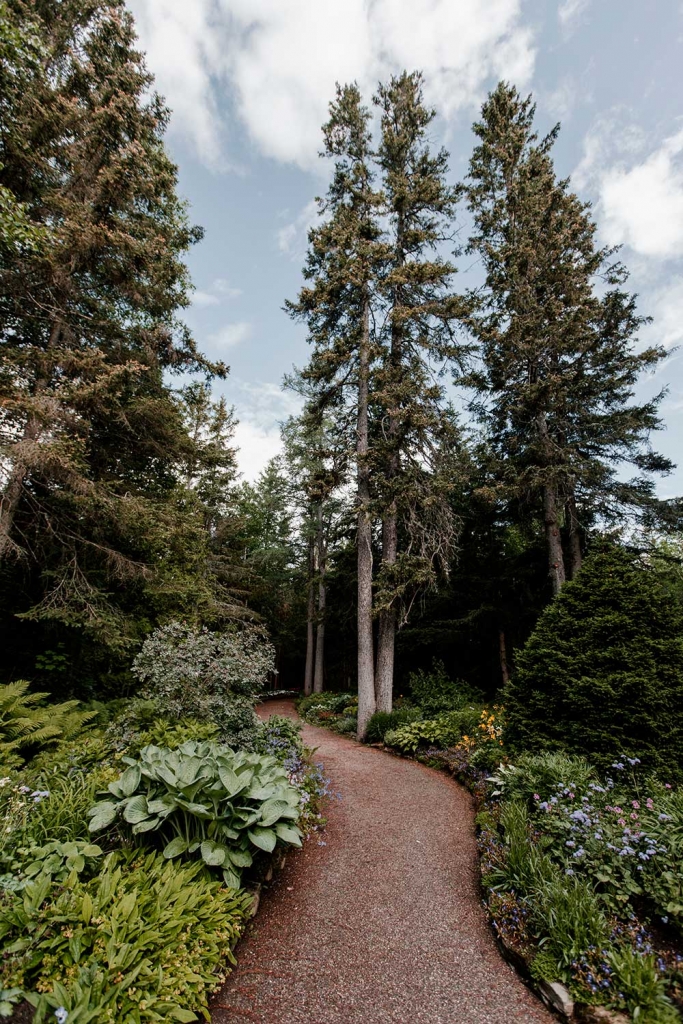
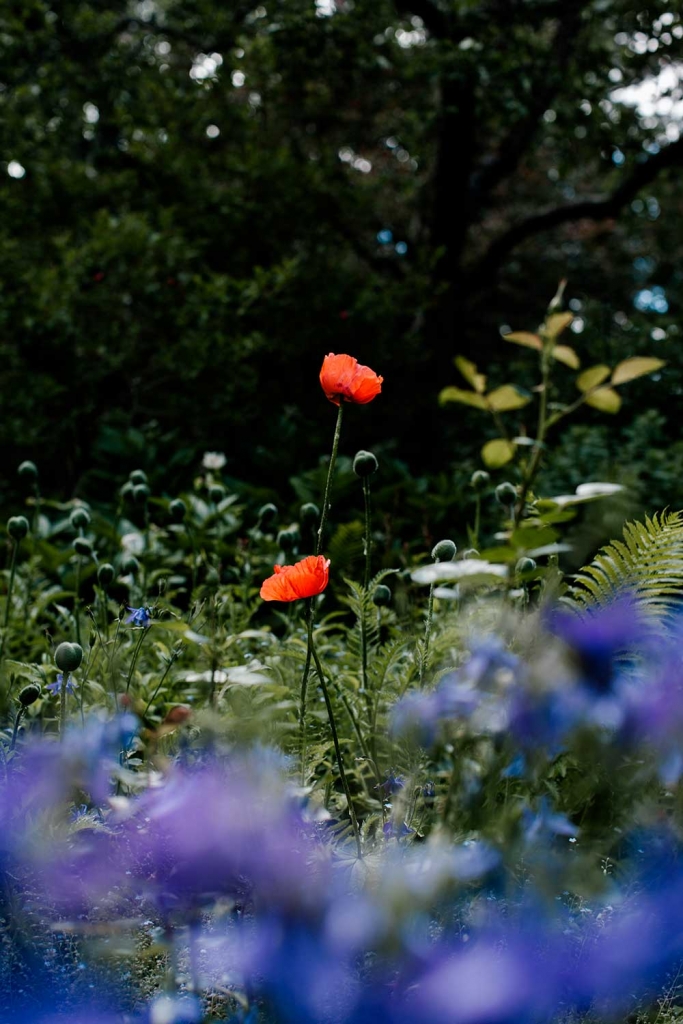
The breeze from the river unfailingly slips into the tableau. Between forests and tides rise gardens of fragile flowers. It’s a marker of the resilience of living beings.
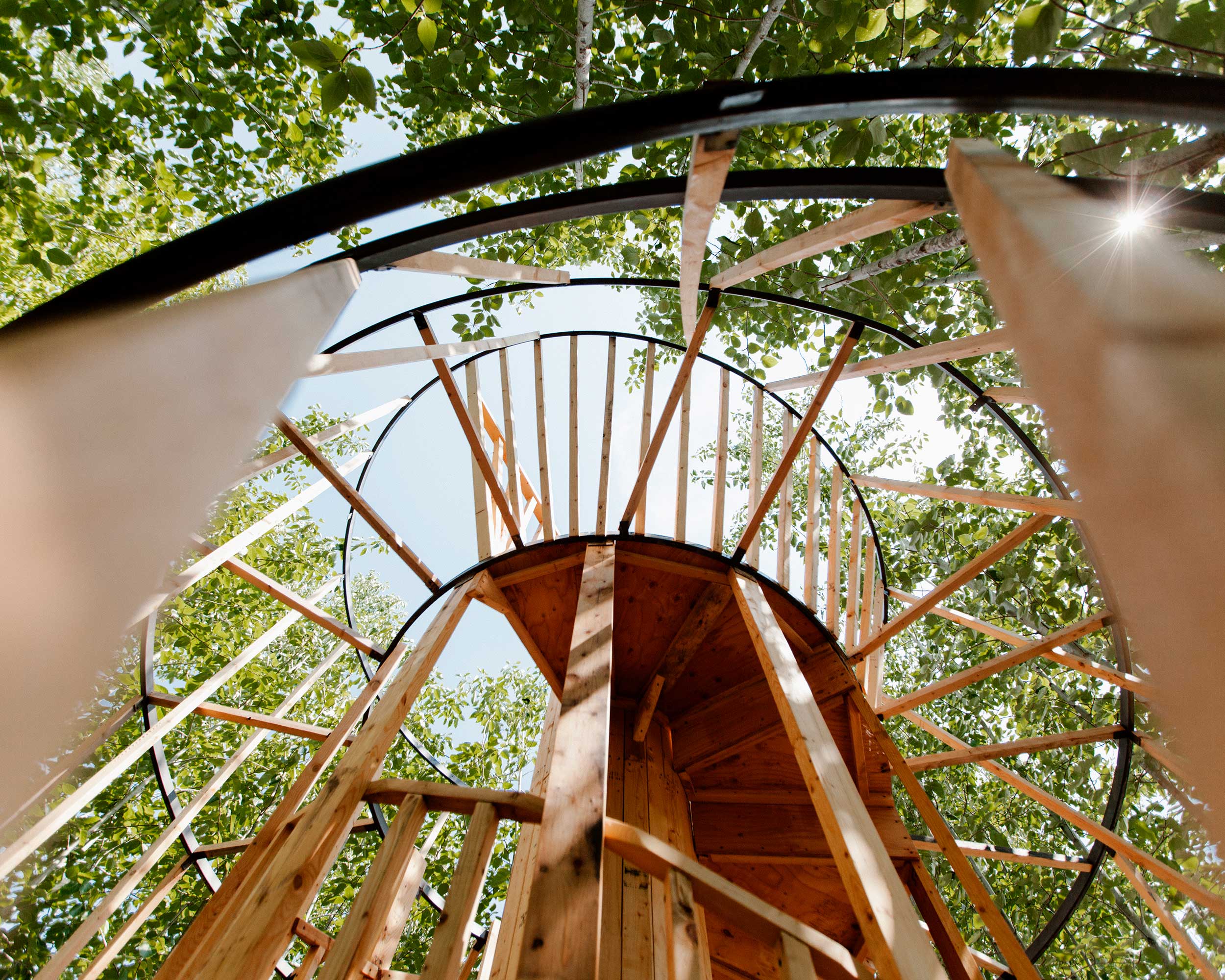
The Contemporary Gardens, an Open-Air Museum
__________
The government took possession of the Reford Gardens in 1961. Elsie Reford had donated her estate to her son Bruce. Lacking his mother’s gardening passion and the financial means to maintain them, he did the unimaginable and sold the beloved property. Henry Teuscher, curator of the Jardin Botanique in Montreal, intervened and convinced the government to buy it. The Gardens became an absolute must on the tourist route of the Gaspé Peninsula.
It was 34 years later that Alexander Reford received a call to take on the management of the Gardens. Both as an historian and out of a sense of family duty, he felt compelled to intervene. In 1995 he took over the management of the Reford Gardens, wanting to take part in the community’s efforts to ensure the survival of the site.
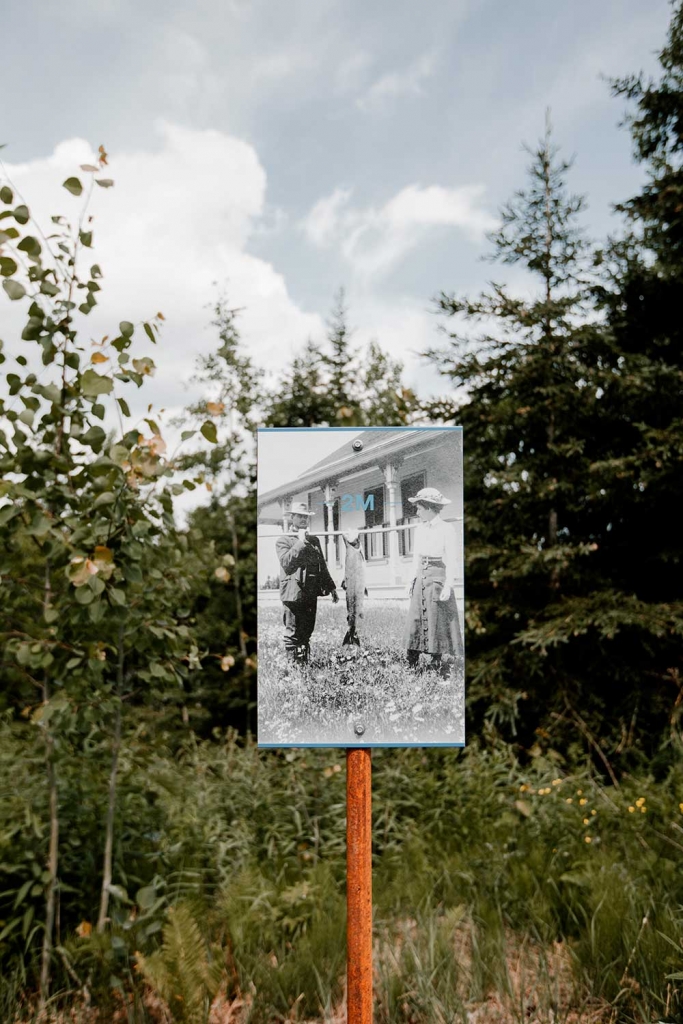
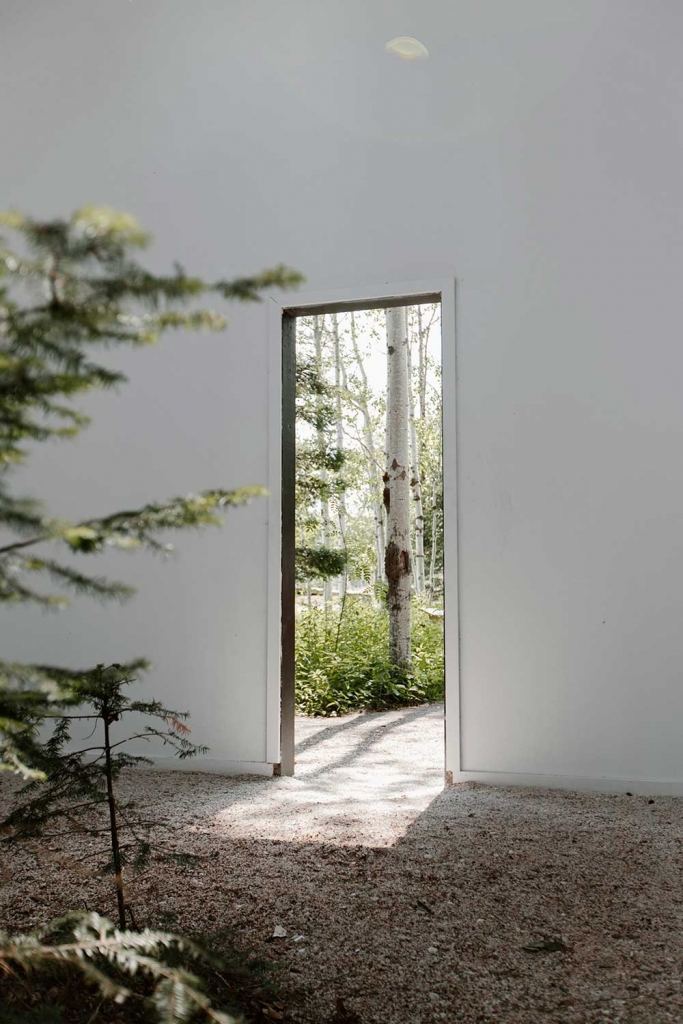
From the outset, Alexander Reford and his team decided to combine a deep respect for the historical and the contemporary, along with a desire to rethink public space. Inspired by a contemporary garden festival in France, Reford and his team launched their own: now the largest such festival in North America.
Every year, five international designers are selected to create an eclectic work in nature. The projects live on for an average of two to three years—though. some much longer—as nature gradually intertwines with the project.
The designers face several challenges. “Often visitors want instant gardens, but a tree will take 15 years to reach maturity,” explains Alexander. The most polished projects actually testify to a harmony of the imaginary and reality. A prime example is the Bois de Biais et sa Folie (The Way of the Woods and its Madness) by Atelier le Balto. With Québécois help, the Berlin designers were able to get their hands on a species of hybrid poplar developed in order to stabilize slopes on Hydro-Québec lands. Today the trees rival the tower the Atelier built, rendering it almost invisible. “What makes this work interesting is that you learn something about here, from the perspective of people from somewhere else.”
Traveling through the eyes of another allows you to appreciate the beauty of your own land—all of a sudden, it’s more exotic than you realized.

Gourmet à la North
__________
To fully appreciate the beauty of a place, sometimes you have to leave it. That’s exactly what Frédérick Boucher did. Now the head chef at the Gardens, Boucher was born in Price, a tiny municipality a just a few minutes away, where he spent his summers fishing and hanging out with local producers. His career took him first to Montréal, then to Paris and Lille, where he developed a practice of sourcing ingredients locally.
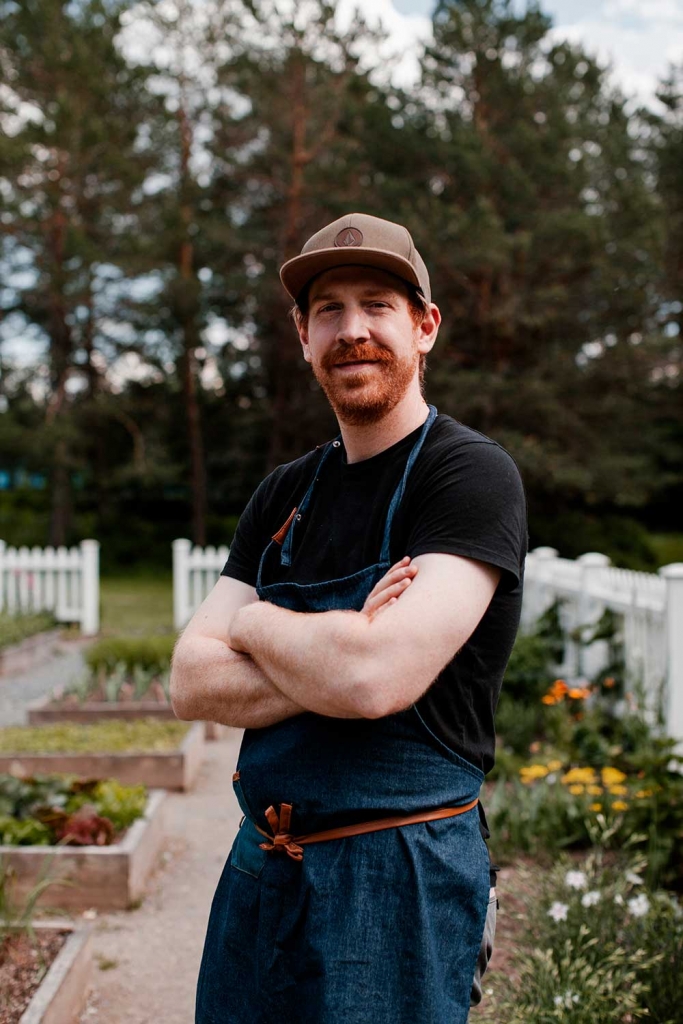
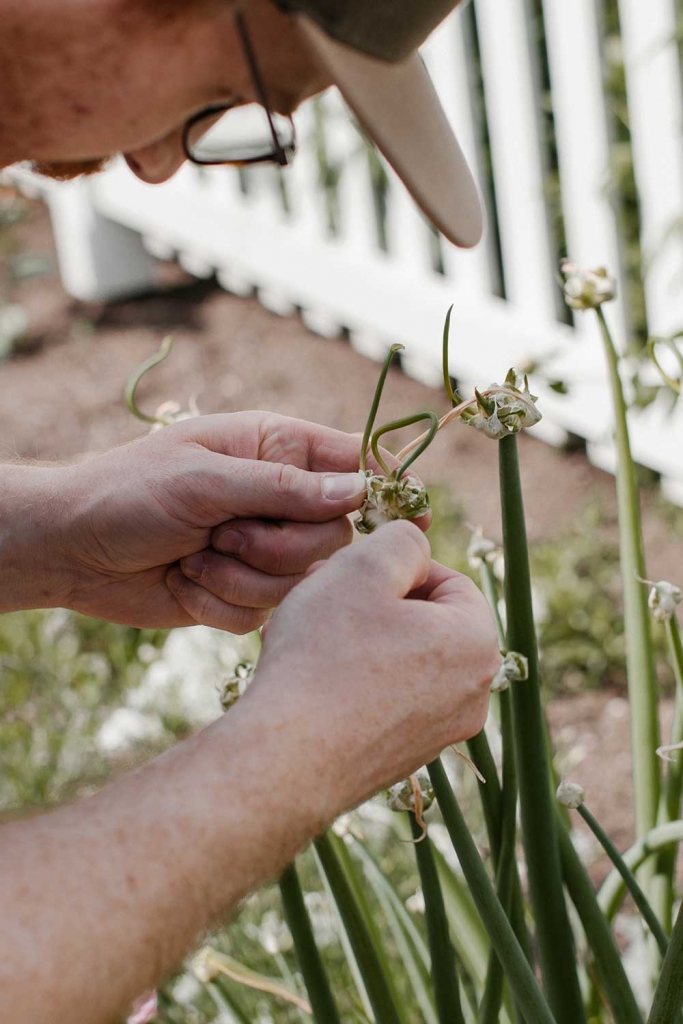
Working in step with the seasons of a northern climate in no way restricts Boucher and his team’s creativity. You drink the flowers and bite directly into the river, savouring the plants iodized on its banks, and relishing a vast array of rare northern berries.
The challenge for Boucher has been the limited local market: “Developing lasting relationships with local producers doesn’t happen overnight. I was in a rush to do it the first year, but I’m learning to accept that these things take time. We’re working with invaluable partners, but there’s still work to be done. And there’s room for more farmers in the area.”
The chef is taking advantage of this year’s unusual season to further develop the identities of Estevan Lodge restaurant and Bufton, the wine bar and bistro located in the forest at the Gardens’ entrance. He also dreams of expanding the vegetable patch and fostering a larger network of local farms, working with the help of people in the area just like Elsie Reford did.

Architecture in Bloom
__________
Pierre Thibault, an architect known for nurturing interactions between people and the land, is currently working on upgrading and converting one of the site’s buildings into a centre for innovation. Students, researchers, artists, entrepreneurs, and speakers will all share the space.
Thibault is also creating a workshop that will serve as a furniture-making laboratory for cabinetmakers and designers. Kim Pariseau, architect and founder of APPAREIL Architecture, is slated to design a line of exclusive furniture for the Gardens. Her Northern aesthetic has won her prizes both in Québec and internationally, and her sustainable approach perfectly matches that of the Reford Gardens. Her installation Le Dernier Petit Cochon [“The Third Little Pig] is one of the works in Reford’s international garden festival. It invites visitors inside a unique brick fireplace, evoking Québec’s masonry heritage as well as the playful imaginary of the tale of the three little pigs.

For Alexander Reford, investing in architecture and design creates a lasting legacy for the community. The Internship House created by Pierre Thibault and Émilie Gagné-Loranger is proof. In summer, the house, made up of two cedar rectangles, can accommodate a dozen local and international designers. During the off-season it provides a peaceful spot overlooking the forest where the Gardens host artist residencies, work meetings, retreats, and family events.
There’s also the ERE132 Eco Home or Innovation House, a museum on green energy and building. Located within the gardens themselves, the building is currently being transformed into a coworking space.

“The idea is to offer self-employed workers, students, and local business people a place to work in harmony with nature. The space will be redeveloped both inside and outside to better support its dual function,” explains Amélie Desrochers, Marketing and Communications Director at the Gardens.

A Living Environment, A Living Community
__________
Well established in the community, the Reford Gardens are a socioeconomic hub for the region. Managed by Les Amis des Jardins, a non-profit, the Gardens are important partners in regional development and work with several organizations. They actively participate in the region’s tourism, economic and sustainable development, job creation, and preservation of the ecosystem.
They are determined to become the greenest gardens in the world, a goal that affects all of their daily decisions: choice of fertilizers, renewable energy, rainwater harvesting on many of their buildings, environmental endeavours, an eco-design approach, and sustainable development improvement projects.
As they approach their 100th anniversary in 2026, the Gardens are once again taking shape as an avant-garde hub for community: “Sometimes we think we’re innovative, but this land has always been an incubator. We’re just going back to our roots,” stresses Alexander Reford.
The Reford Gardens have nonetheless become a beacon and inspiration for the local community and creatives around the world. It’s easy to see why many visitors, including a certain woman born in Saint-Flavie, never want to leave.
__________
This summer, the Estevan Lodge restaurant will be closed, but the bistro-buvette and pop-up farmers’ market are open. You’ll find products from the gardens, bread, takeout dishes, and gourmet picnic baskets. A selection of local beer and wine are also available and can be consumed on-site to make your picnic complete.
__________
Freelance writer and photographer Catherine Bernier also holds degrees in Counselling Psychology and teaching meditation. She uses her creativity to awaken people to self-awareness, on both the collective and the environmental levels. Originally from Sainte-Flavie, Gaspésie, she has a special relationship with the ocean and the vast wilderness that has shaped her relationship to photography from the start. Her refuge, an off-grid cabin in Nova Scotia, allows her to align her values with her passion: surfing!
Never Miss Another Issue
Two issues per year
25% OFF previous issues
Free Shipping in Canada







